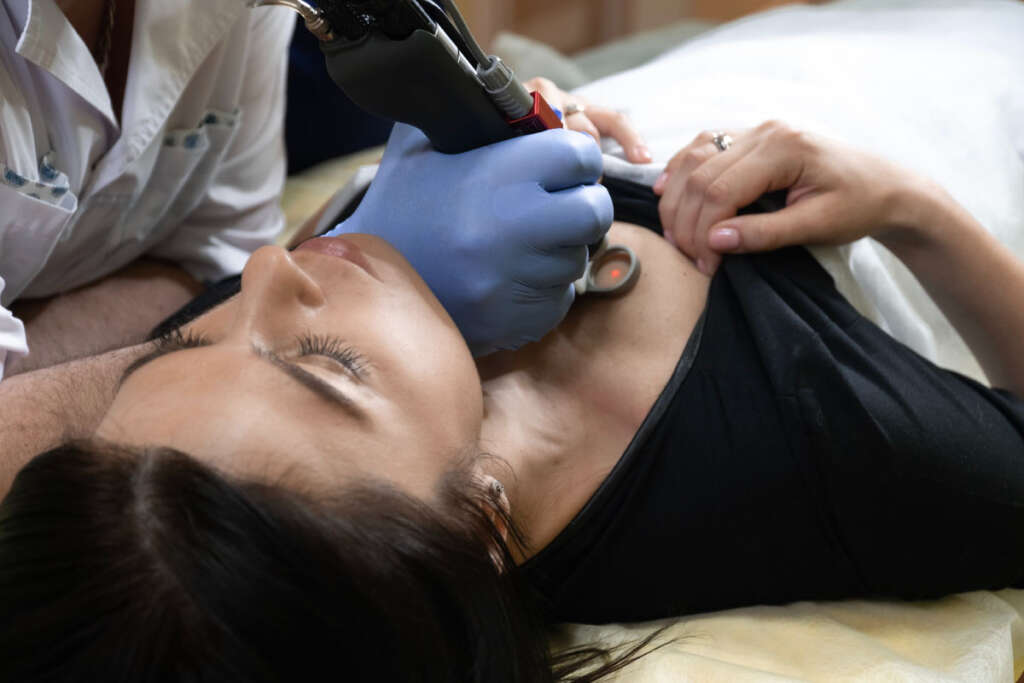Benign Skin Growth Treatment
Fortunately, the vast majority of “spots” on our skin are benign, meaning they are non cancer-causing and will not lead to an infection. These spots can be flesh-colored, brown and red and can be flat or elevated from the surface. There are spots we are born with and many spots develop as we go through life. Examples of flesh-colored spots include neurofibromas, cysts and lipomas. Brown spots include moles and seborrheic keratoses, a lot of times these can mimic melanoma. Red lesions include angiomas, pyogenic granulomas, and other vascular spots, and for the most part these are ok.
At Michigan Dermatology Institute, we recommend a total body skin exam to ensure all spots are evaluated thoroughly. We are committed to preventing the devastating consequences of missing a bad spot, and a complete check will give you and us the best chance to prevent this. These spots can be treated, under certain circumstances by insurance, to get rid of them. Call today to make your appointment for your evaluation.
A: Sometimes we are born with spots on our skin; some develop as we are kids and others develop during adulthood. A combination of genetics and environmental factors play a role in the development and growth of these spots. A lot of times a family history is present where parents or siblings will have similar lesions.
A: It’s always safe to have these evaluated if they grow or change color, cause issues due to location on the body, or start to hurt, itch or bleed. While most of these spots can stay there and do not cause harm, sometimes getting rid of them is necessary to ensure nothing else is happening on the skin.
A: A lot of these spots develop from ultraviolet exposure (both sun and tanning beds), others are genetically destined to occur, and others happen in response to environmental factors. Good life-long sun protection and appropriate skin care will help you minimize the exposure to many spots, but it cannot prevent the formation of every spot.
A: Some spots are white, such as milia and closed comedones. These are pores that are filled with dried oils. Some spots are yellow, like sebaceous hyperplasia. These are overgrown oil glands, and sometimes can be confused for basal cell carcinoma. Make your appointment today so we can evaluate these spots for you.


